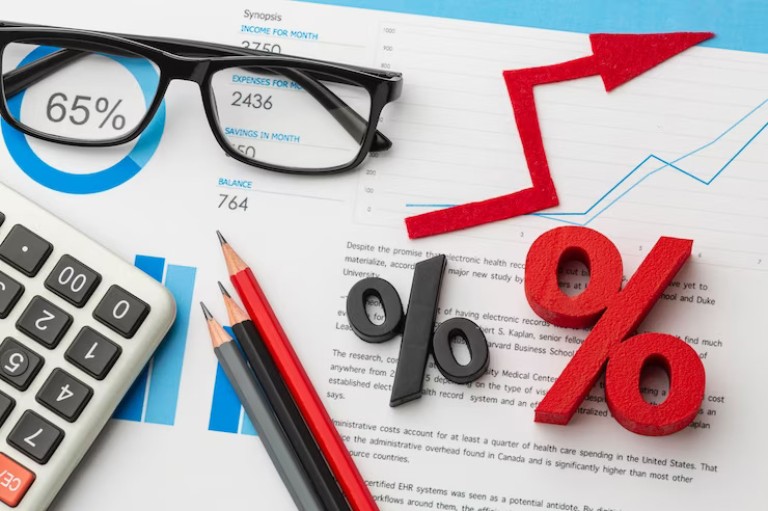If you’re planning to retire within the next 10 years, it’s important that you fully understand what your financial future is going to look like. Establishing a comfortable retirement takes time and is challenging for many people, but there are things you can do to solidify your finances and better prepare for the life you envision. Luckily, there’s still time to increase your savings if you’re 10 or more years away from retirement. To gain insight on your current financial situation, assess your savings, sources of income, investments, and assets then compare them to your retirement goals, retirement budget, and your desired retirement age. For a stronger understanding of your projected finances, here’s how to predict future investment returns to plan your retirement.
The First Steps of Retirement Planning
If you haven’t already started planning for retirement, that’s okay. It is possible to plan for retirement at age 50+. However, the earlier you start, the more your money will grow. Every dollar that you save can increase in appreciation through strategic investments and retirement planning. To understand how much you should be putting away, take these steps:
1. Consider How Much Money You Need to Retire
Your retirement goals should reflect your current budget, lifestyle, and income. While you will be receiving income through Social Security, you’ll need excess savings to retire comfortably. A good rule of thumb is to assume you’ll need roughly 70% to 90% of your pre-retirement income.
2. Create Financial Goals
The sooner you add retirement savings to your financial goals, the better. Create a goal to contribute to a retirement fund yearly, just as you would contribute to an emergency fund.
3. Choose a Retirement Plan
If your employer has a retirement plan, utilize it. This is especially important if they offer company matching. If you don’t have an employer-based retirement plan, open your own. There are options for a 401(k), roth IRA, traditional IRA, self-directed IRA, simple IRA, SEP IRA, and solo 401(k) depending on your employment status and current income. It’s also possible to roll over your 401(k) to an IRA if needed.
4. Determine the Best Retirement Investments
Creating a diverse investment portfolio is a great way to build your assets and plan for retirement. You can include different types of investments, such as stocks, bonds, and mutual funds, and choose your risk based on goals and age. For help determining the best retirement investments, work with a financial advisor and make sure you understand what your future returns will look like. Over time, you may need to rebalance your investment portfolio to stay in line with your goals.
Understanding Future Investment Returns
To determine the best retirement investments for your goals, you need to take the above aspects of retirement planning into account. Predicting future investment returns will depend on how long you have to invest, how much you invest, and how comfortable you are with utilizing high-risk investment portfolios. One thing that’s important to understand when trying to predict future investment returns is that it’s highly dependent on the current state of the financial market. National and global events can drastically change the stability of the market and create either lower or higher returns than expected. With that being said, it’s still necessary to assume some sort of future investment returns if you’re trying to plan for retirement savings.
Stay Updated with Market Analysis
Every year, analysts take the time to compare current market trends to previous years to try and better understand what the return will be. While predicting future investment returns can be a dynamic and difficult feat, it allows for estimates. During this analysis, predictions for the next five to 10 years is also provided. These are usually accompanied by wide margins as predicting what will happen to future markets ultimately depends on the global environment.
Consider Stock Investment Returns
The dividend yield is a financial ratio created by calculating how much a company pays shareholders for each share divided by the current stock price. Dividend yields are paid yearly and can help you understand how much you’ll make if the price of stocks for that company doesn’t change, or only slightly fluctuates. This can give you an idea on investment returns but is only part of the puzzle. Next, consider earnings growth, which is the anticipated rise in stocks for future years, based on past averages. Then, calculating earnings growth and combining the three can lead to a stronger understanding of how individual stock portfolios will create future investment returns.
Understand Risks to Future Investment Returns
One of the biggest risks to predicting future investment returns is inflation in the market. As inflation rises, the purchasing power of investments can lower. This reduces current values and can affect future returns.
While diversifying your portfolio is the best way to help your overall future investment returns, it’s worth understanding how each type of investment will affect those returns in the long run.
Creating a diverse investment portfolio while planning for retirement can be overwhelming. With all the different options available, choosing something that’s going to help you reach your goals without upending your current finances requires an understanding of the industry. Trying to predict future investment returns can be a complicated venture based on market performance, risk tolerances, and current financial standings. To help you better understand your future investment returns and how to plan for retirement, contact William Bevins.
As an experienced Franklin, TN financial advisor who specializes in retirement planning, he can help you determine the best strategies to maximize future investment returns based on your goals. To schedule a consultation, contact William Bevins today at [email protected] or by calling (615) 469-7348.




